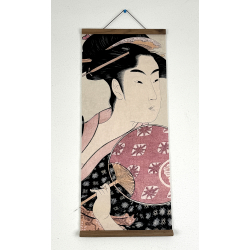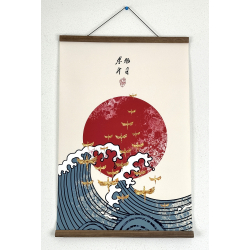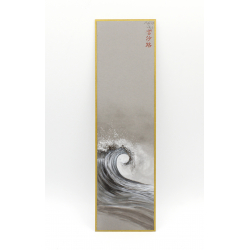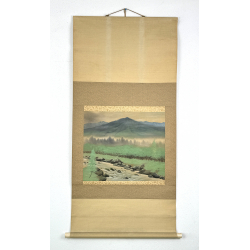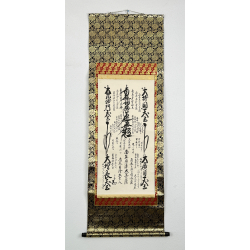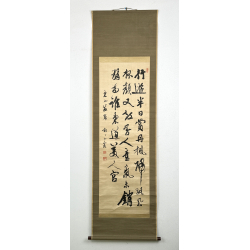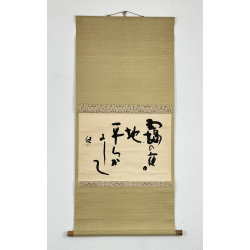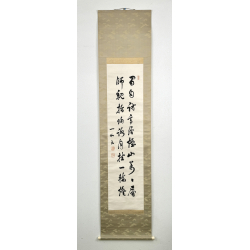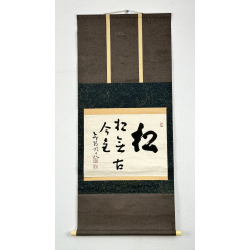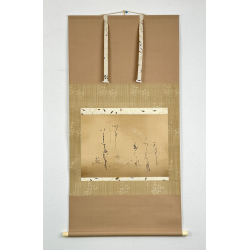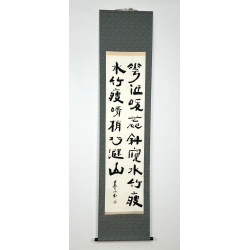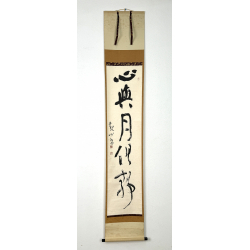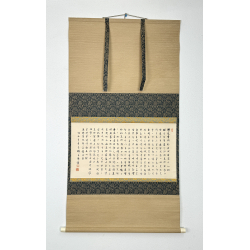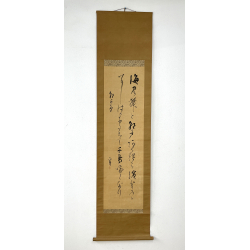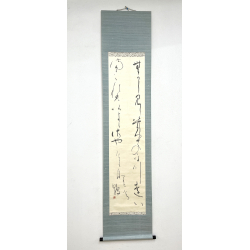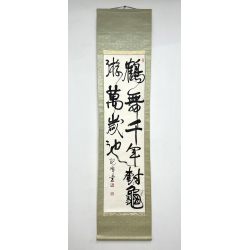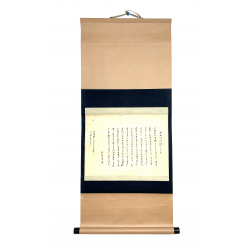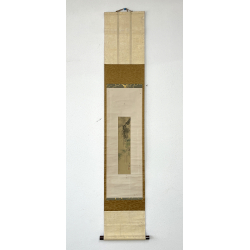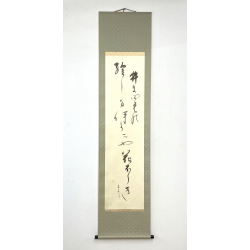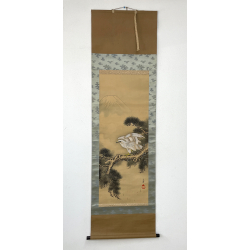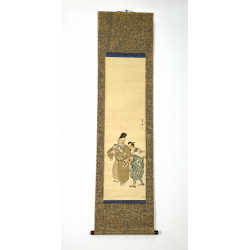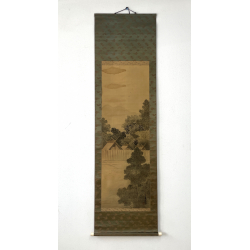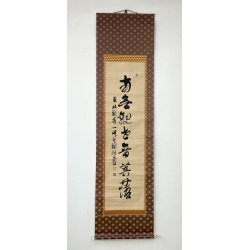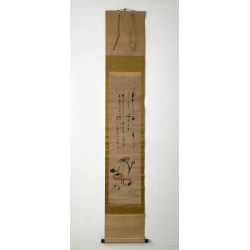PAINTINGS - KAKEMONO
The origins of the kakemono can be traced back to Tang dynasty China (7th-9th centuries). This form of presenting works of art probably developed from sutras mounted on similar structures. It was later introduced into Japan during the Heian period by esoteric Buddhism. Initially the kakemono carried Buddhist representations for veneration, or as a way of displaying calligraphy or poetry. During the Kamakura period it became more common. From the Muromachi period onwards, due to the influence of Zen Buddhism, kakemono became associated with the tea ceremony, while the most commonly depicted subjects were landscapes, flowers and birds, as well as portraits and poetry. Over time it came to be appreciated more as a work of art than as a cult image.
The word kakemono is derived from the verb kakeru, meaning to hang or suspend. The kakemono can be made of silk, paper or cloth. It is usually decorated with Japanese calligraphy or painting, and placed vertically on the wall in an elongated shape called a juseimon (十裾?).
The origins of the kakemono can be traced back to Tang dynasty China (7th-9th centuries). This form of presenting works of art probably developed from sutras mounted on similar structures. During the Kamakura period it became more common. From the Muromachi period onwards, due to the influence of Zen Buddhism, kakemono became associated with the tea ceremony, while the most common subjects depicted were landscapes, flowers and birds, as well as portraits and poetry.
In Laos Garden you can buy many of these paintings, both ancient Japanese and modern Chinese reproductions.

